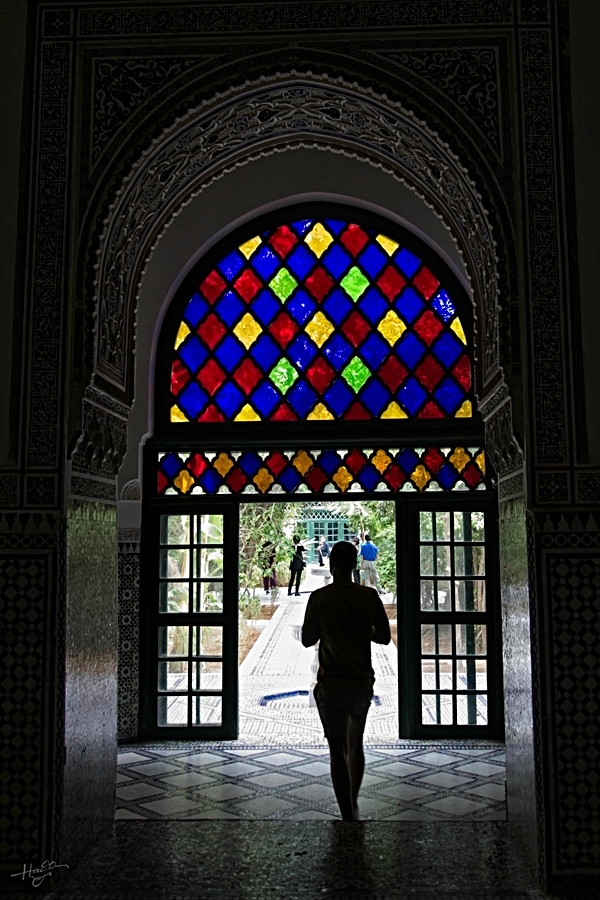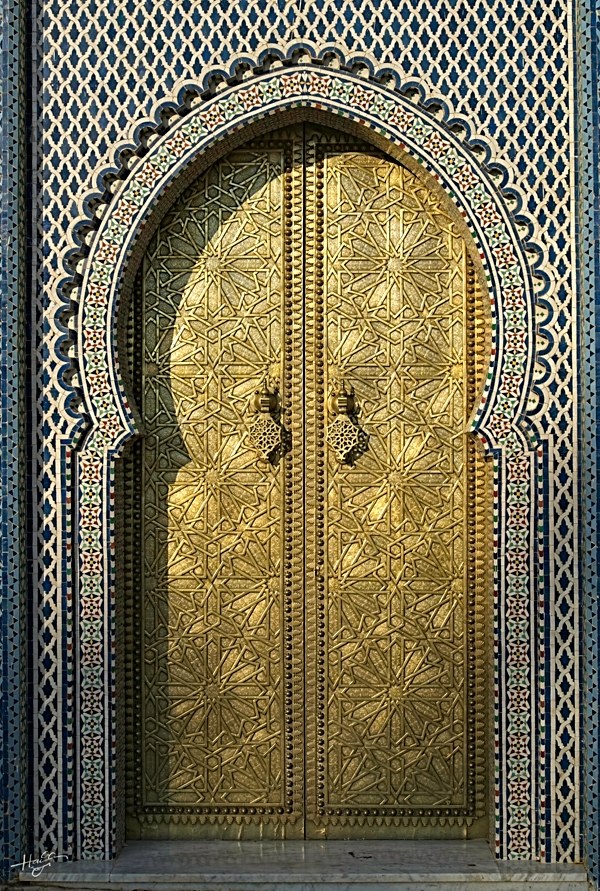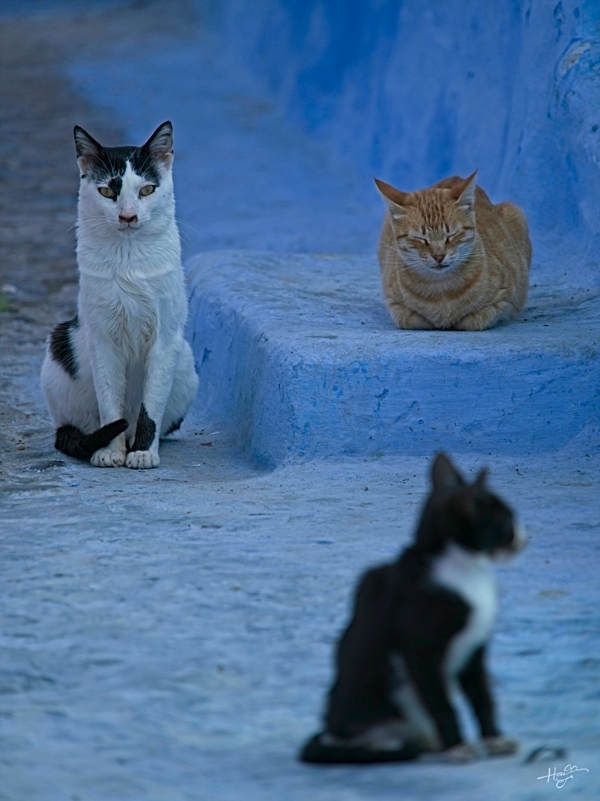- Travel + Photos
- Voyages
- Kingdom of Morocco
Kingdom of Morocco (المملكة المغربية)

The plan was to arrive early Saturday morning in Casablanca (around 7 am) to have an extra day for visiting. Perfect, right? Except for the fact that I had to leave on Friday the 13th... Well, you've guessed how the story goes. In short, I got to Casablanca late Saturday night, more than 13 hours later than planned. And yet, it felt almost like I was lucky; it could have been much worse. (Of course, my troubles didn't have anything to do with Friday the 13th, but it's more fun to write the story that way).
Note from the author this write-up was done close to 3 years after the trip, thus the impressions are not the freshest and most likely tainted by time.
Casablanca (الدار البيضاء)
As a result, I was exhausted and didn't feel like doing much in Casablanca beside visiting the Grande Mosquée (Hassan II Mosque) and the seashore around it.
For lunch, I went to La Sqala restaurant, arriving there just behind a Middle Eastern man. As the restaurant was busy, the man invited me to his table. He talked to the waiter (in Arabic) and ordered food for both of us (apparently the dishes he ordered were not on the menu). I learned that he's a businessman from Dubai. Since people take advantage of tourists, especially those perceived as rich, he hides his origin by employing dialect from Egypt and Jordan. Conformed to the Middle East hospitality, he ordered way too much food and we couldn't finish them all.
Marrakesh (مراكش) and the Ouzoud Falls (شلالات أوزود)
The people that I know either hate or adore Marrakesh, thus I couldn't form an opinion on what to expect from that city. Since I was still recuperating from earlier fatigue, I did not see everything from Marrakesh. In the end, I was not disappointed, nor completely enchanted by the city. (Not very helpful for you either, eh?)
Marrakesh was founded in 1071 by the Almoravid and was for a long period, a major political, economic and cultural centre of the western Muslim world. It has several impressive monuments dating from that period. Its medina is a UNESCO World Heritage site since 1985.
The medina is known for its formidable labyrinth of multitude small streets and alleys. Fortunately, I booked a room in a riad just outside and adjacent to the medina, which allowed me to slowly get my bearing inside the medina. Once I learned to recognize the main arteries in the medina, it becomes easier to find my way around. It then becomes more fun, or at least more reassuring, to get lost while exploring the smaller streets and alleys. And it's really by getting lost in those small streets that one can find interesting things, at least that was my case.
I'm definitely not one of those shopping lover people, but I have to admit that discovering the things they sell in the souks is an experience worth having. It's quite entertaining to see the sort of things they sell (a bit of everything) and to observe the interactions between vendors and tourists. And if you just slow down a little, you can even see scenes of daily life of the medina inhabitants.
An all day excursion to the Ouzoud Falls is a welcome escape from the chaos of Marrakesh and to find nature again. Ouzoud Falls, at 160 km (99 mi) northeast of Marrakesh, is a collective of several water falls with the tallest being a 110 m (361 ft) three-tier water fall.
In fact, Marrakesh is a good base camp to explore the mountains of western High Atlas, especially if you have a car at your disposition. Skiing can be done in the winter on the slopes of Oukaïmeden, the highest skiing resort in Africa. However, my plans were to visit the Sahara desert.
Ouarzazate (وارزازات) and the Sahara (الصحراء الكبرى)
Since I've always liked the tranquility of the desert, and the sentiment of being alone in the world there, I could not pass on the opportunity to set foot in the Sahara desert. However, the Sahara is a very long detour on the way to Fez from Marrakesh. In the end, the most practical way for me was to take a shared tour with Maarakech Desert Trips.
On the way to Merzouga, a little saharan village, the tour passes by beautiful areas that I would have liked taking more time to explore if I were on my own: the famous Tizi N'Tichka pass (2260 m, 7415 ft) in the High Atlas, the Dades valley and the Todra valley.
From Merzouga, the group rides camel through the sand dunes of Erg Chebbi to a Bedouin camp for the night. I must say that riding a camel is much less comfortable than riding a horse. I don't know if it's because of the deep sand, but the camel back movement is more pronounced and much less regular than on a horse (seems like there's no rhythm). As a result, about 90% of the pictures I took while riding the camel, are either out of focus or badly framed.
The desert camp was a disappointment for me. It's difficult to find tranquility and solitude when you share the place with 50 or so other people (there are people from other tour groups). I finally found that solitude by walking several hundred metres outside the camp. The stars and the milky-way look so bright. And at last, the silence of the desert ...
I was really lucky with my passage in the Sahara desert. Without planning in advance, I ended up in the desert during the new moon, and there were no wind storm during my stay there. The sky was clear, allowing for watching the milky way.
Fez (فاس), Meknès (مكناس) and Volubilis
A big part of the history of Morocco took place in the region of Fez-Meknes.
Founded in 787 under the reign of Idriss I of Morocco, imperial city, Fez was the capital of the kingdom over several periods. Although the political capital of Morocco was transferred to Rabat in 1912, Fez has retained its status as the country's cultural and spiritual centre. At its apogee, Fez was one of the major centres of the Islamic civilization alongside Baghdad, Damascus, Cairo, Istanbul, Jerusalem etc. Fez is the home to the oldest existing, continually operating higher educational institution in the world: the University of al-Qarawiyyin (established in 859).
Today, Fez largely consists of three distinct quarters: the old city (Fes el-Bali), the imperial quarter (Fes el-Jedid) and a modern urban area of Ville Nouvelle established during the French colonial era. Together, Fes el-Bali and Fes el-Jedid constitute the medina of Fez, which is a UNESCO World Heritage site.
On my arrival in Fez, a person from the riad where I booked a room came to meet me outside of the old city walls. That was a good thing because I would not have been able to find that riad on my own. The labyrinth in the medina is worse than in Marrakesh: the streets are smaller, there are more of them and the medina is bigger. What about Google Maps, you ponder. It's so incomplete and imprecise that it's basically useless. Moreover, I don't even get any GPS signal inside the medina most of the times. I decided to take a guide on the first day to get to the monuments I wanted to visit faster, and to help me get a bearing of the medina. The following days... I got lost many times, and that's part of the adventure in Fes el-Bali. The most important thing is to be able to find the riad at the end of each day.
It's much easier to get around in Fes el-Jedid. The streets are not covered and somehow that's easier for me to get my bearing.
Meknes, 65 km (40 mi) away from Fez, is another imperial city and former capital of the kingdom. Long time overlooked in favour of Fez, visitors are nowadays attracted to the city for its historical heritage, its tranquility and the kindness of its inhabitants. Meknes' medina is also a UNESCO World Heritage site. But by now, I got a "medina fatigue" and did not spend much time in Meknes' medina.
At 32 km (20 mi) north of Meknes is yet another UNESCO World Heritage site: the Roman ruins of Volubilis. Volubilis was an antic Berber city (3rd century BC), then grew under the Roman rule (1st century AD), and considered the capital of the kingdom of Mauretania. Not far from there is the holly city of Moulay Idriss. It is famous for being the site of the tomb of Idriss I, the founder of Fez and first major Islamic ruler of Morocco. Due to its status as a holy city and sanctuary, the town was off-limits to non-Muslims until 1912, and non-Muslims were not able to stay overnight until 2005. Nowadays, Moulay Idriss is the holly city of Morocco. For Muslims of modest means, a pilgrimage to the town is equivalent to a trip to the Mecca.
Chefchaouen (شفشاون)
Chefchaouen was the reason of my trip to Morocco. It's a small town situated in northwest Morocco, in the Rif mountains at 600 m (1969 ft) in altitude. Its name comes from the Berber word "achawen", which means "the horns", in allusion to the crests that surround the town. It's a holly city that was for a long time forbidden to Christians.
Chefchaouen distinguishes itself from other cities in Morocco by the blue colour of its houses. It's not surprising that people call it the "blue city". There are several theories as to why the walls were painted blue: the blue keeps mosquitoes away, the blue symbolizes the sky and heaven, etc. However, according to some, the walls were mandated to be painted blue simply to attract tourists at some point in the 1970s.
I saw a picture of the houses painted in blue and wanted to verify with my own eyes whether it's that blue or the picture was just photoshopped. It was not a disappointment. It's really... blue, in all of the shades of that colour. As a bonus, the town is very relax and tranquil. And I had the best tajine in Morocco there, in a hole-in-the-wall restaurant (at very reasonable price) named Bab Ssour.
Remarks / observations
Dates of the trip: 13-28 Octobre 2017
Berbers speak Arabic, Arabes don't speak Berber.
One of the things that strikes me the most is that Moroccans don't like the camera lens pointed at them. It's not just that they don't like being taken in pictures by strangers - I can totally relate to that - they seem to be violently discontent and often yell "no photo". After a little time in Morocco, I come to understand their reaction. Many tourists, especially those from a certain country, are inconsiderate and take pictures of everything, without asking for permissions, and without being discrete... In short, that becomes annoying very quickly.
The silent mode of my camera was very convenient in Morocco. It's not to sneak in pictures of people without having to ask for their permissions - though I did take a picture of a woman by accident when she came out of her house, and of course she yelled "no photo" - but rather, it allowed me to take pictures in tranquility without attracting people's attention.
To find my way around in the cities, I use the offline Google Maps. But that doesn't work for the medinas. Most of the small streets in the medinas are not in Google Maps, and most of the time I can't even get GPS signals inside the medinas (probably because of the covered streets). It's definitely more difficult to get my bearing in the medinas of Marrakesh and Fez than in the old walled city of Jerusalem.
It never crossed my mind that gentrification could exist in Maghreb countries, but it's there in Morocco. The form I saw comes from expatriate Moroccans or Europeans who buy riads or dars and use them as hotels or guesthouses. That of course drives up real estate values, making it less affordable for some locals, pushing them to the outskirt of towns.
I visited Mekness, Volubilis and Moulay Idriss in one long day from Fez. I took the second train in the morning from Fez to Mekness, hired a taxi for half a day to go to Volubilis and Moulay Idris (you just need to find the official taxi area for that, so not to have to haggle), then took the last train out of Meknes back to Fez. It's probably worth spending a night in Moulay Idriss to watch the sunset from the hills.
Copyright © 2020, Northwest Summit. All rights reserved.
No part of this page may be reproduced, republished or copied without the express written permission of its author.


